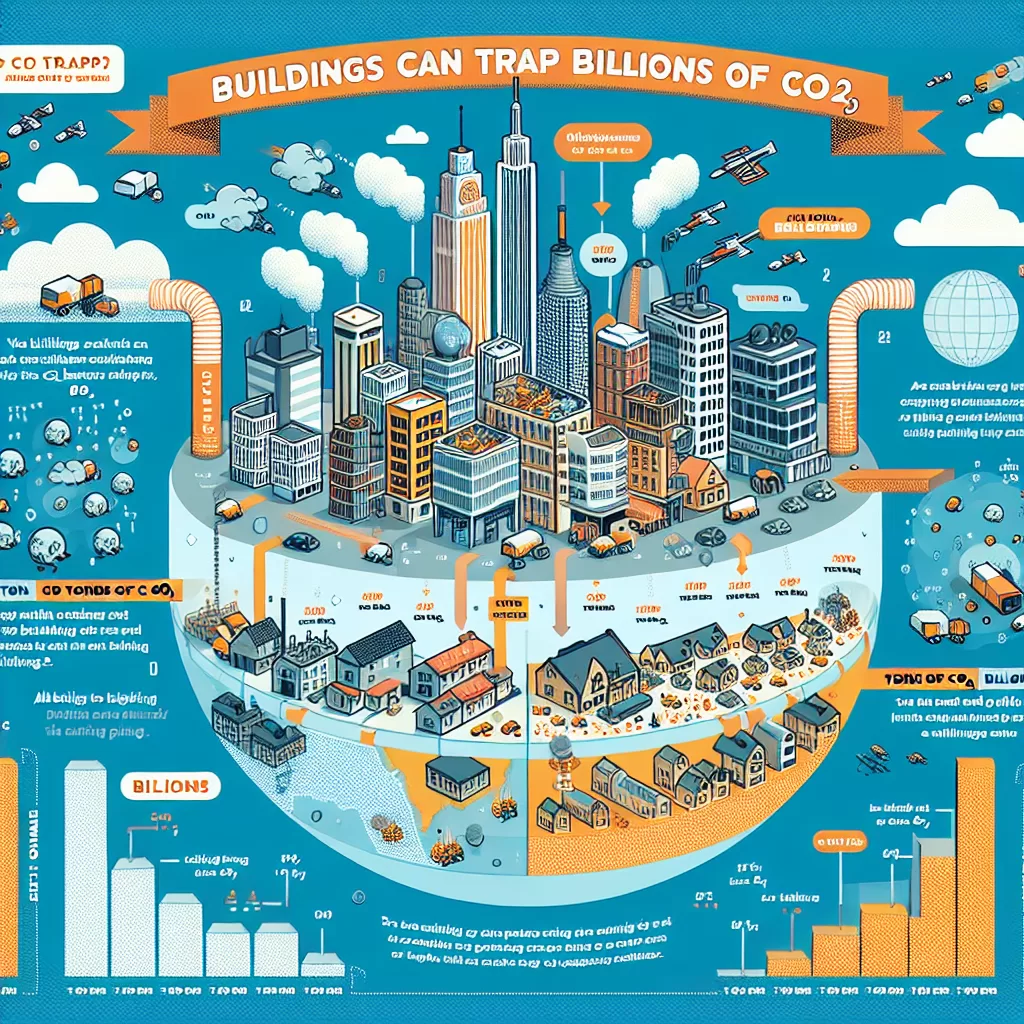Buildings Can Trap Billions of Tons of CO2, Study Finds
As the world grapples with the escalating climate crisis, a groundbreaking study by civil engineers and earth systems scientists uncovers a promising solution – utilizing construction materials like concrete and plastic to trap billions of tons of carbon dioxide (CO2). This innovative approach, combined with robust efforts to decarbonize the global economy, could propel us closer to achieving critical greenhouse gas emission reduction targets.
The Untapped Potential of Built Environments
According to the research findings, the construction industry holds significant untapped potential for carbon capture and storage. Concrete, a ubiquitous material in modern infrastructure, possesses unique chemical properties that allow it to absorb and lock away CO2 from the atmosphere over its lifetime. Similarly, certain plastics used in buildings have the capacity to sequester substantial amounts of carbon through their manufacturing processes.
Quantifying the Carbon-Trapping Capabilities
While the specifics of the study’s methodology remain undisclosed, the researchers quantified the staggering volume of CO2 that construction materials could potentially trap. Their calculations reveal that leveraging this carbon capture capability across global building stock could sequester billions of metric tons of greenhouse gases – a critical step towards mitigating the worst effects of climate change.
A Dual-Pronged Approach for Maximum Impact
Notably, the study emphasizes that this carbon capture strategy should be pursued in tandem with comprehensive efforts to decarbonize various sectors of the global economy. By simultaneously reducing emissions at the source and harnessing the carbon-trapping capabilities of construction materials, we can amplify our collective impact on climate change mitigation.
Implications for Policy and Practice
As the implications of this research reverberate across the global stage, policymakers and industry leaders must reevaluate existing building codes and practices. Incorporating carbon capture considerations into future construction projects could unlock a powerful tool in our fight against climate change while fostering innovation and sustainability within the built environment.
Ongoing Research and Collaboration
While this study presents a promising avenue, continued research and interdisciplinary collaboration are vital to refine these carbon capture techniques and maximize their real-world applications. By harnessing the collective expertise of scientists, engineers, and policymakers, we can unlock the full potential of our built environments as carbon sinks, safeguarding our planet for generations to come.

